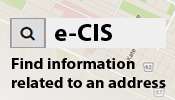
Walk Bike Projects
Improving and expanding the network
The City builds on the pedestrian and cycling network in conjunction with road renewal and other construction projects. The City also dedicates funds annually to improve, upgrade and expand upon the pedestrian and cycling network. The City of Winnipeg’s Public Works Department recommends an annual list of projects in the Pedestrian and Cycling Action Plan. Adoption of annual projects requires approval from the Standing Policy Committee on Infrastructure Renewal and Public Works before going to all Council for final approval in the Pedestrian and Cycling Program of the Capital Budget.
Improving and expanding the cycling network usually requires a reconfiguration of the existing streets to accommodate new or improved facilities with the objective of providing opportunity for all ages and abilities to feel safe and comfortable cycling. The process generally involves a study of the existing street use, including a parking analysis, traffic analysis of vehicles, pedestrians and bikes, utilities, lighting, trees, and public input. The next stage is to develop design alternatives, which are presented to the public and stakeholders for feedback. Once we have completed the study and design, the City identifies the funding mechanism so the plan can be delivered through construction.

